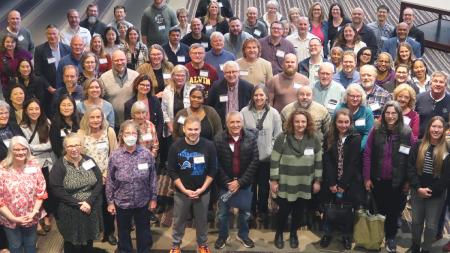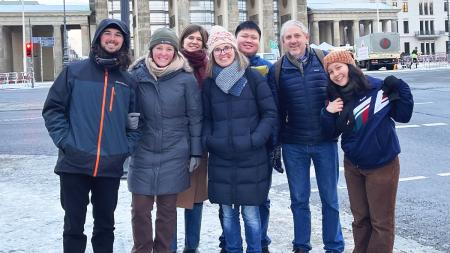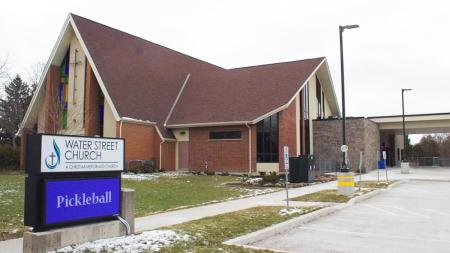FAQ's Regarding the Unified Missions Agency Statement

Last week, the boards of Christian Reformed Home Missions (HM) and Christian Reformed World Missions (WM) voted to instruct their directors, under the supervision of Dr. Steven Timmermans, executive director of the Christian Reformed Church, to explore the feasibility of bringing together HM and WM into an agency with both a local and global vision and mandate. Below are some FAQs about this development. For background, see the news story.
1. The statement references a “global and local mission, vision and mandate,” why?
As the pace of globalization has increased, the distinctions between the “mission fields” of the two agencies has been shrinking. A unified mission entity would benefit from the missional experience and perspectives of both agencies. It will be positioned well for maximum impact in communities around the globe and will empower congregations in the globally-influenced culture of North America.
2. What benefits, opportunities and areas for increased effectiveness come with a unified missions agency?
It is difficult to create a comprehensive list that covers all of the potential benefits of a strategic restructuring like this, but here are a few:
- Shared knowledge, organizational expertise, and programmatic integration related to missional strategy and implementation
- Opportunity to connect North American immigrant congregations with those in countries of origin
- Further integration of programs such as:
- Campus ministries, with missional efforts to reach specific ethnic groups
- Transformational Networks that connect congregations in North America with those in other countries
- Efforts to reach people living in megacities, for example Mission Montreal
- Global Coffee Break
- Responsive to synod, classes, congregations and their leaders who have been encouraging closer collaboration and strategic restructuring of agencies
- Increased networking capacity for church-to-church relationships
- Raised awareness of new and existing missional opportunities among the CRCNA family
- Proactive strategy for advancing the gospel in a time of constant cultural change, which requires that we be adaptive in our work
3. What does this mean for the existing staff and projects of the current staff? For the Directors?
Home Missions and World Missions highly value our staff and the projects and programs which each agency has stewarded over the years. We don’t know exactly what the future holds but, in a time marked by adaptive challenges for institutions, leadership must trust that God holds the future in His hands. Whatever the outcome, all decisions will be made to create an agency that maintains and grows ministry in the most effective way possible.
4. What does this mean for the World Missions and Home Missions Boards of Directors?
Should both boards approve this move, the leadership assumes that they will continue to meet through at least calendar year 2015 to provide oversight of and input into the process. At this point, leadership believes it would be strategic and stabilizing for the Board President of Home Missions to request an extension of his term to serve for an additional year. The leadership will propose joint meeting times during the transition and proposes a moratorium on the election of new board members in this season.
5. Why so sudden?
This is not a new idea. The respective boards have been discussing this possibility since 2008. The idea never got translated into action for a variety of reasons but, through prayerful discernment, the new leadership has perceived a call from God to revisit this important and strategic endeavor for the sake of increasing our missional impact. The increasingly collaborative nature of our work and the denominational climate also suggests that the time is right for this move.
6. What about Back to God Ministries International and World Renew? Or Discipleship and Faith Formation Ministries? Or Calvin Theological Seminary?
Co-working, collaboration, with all appropriate and willing CRCNA entities will and ought to continue. This proposal brings together two agencies separated far more by geography than anything else. If that geographical division ever made sense, it makes almost no sense in the interconnected world of today.
7. Was this decision motivated by financial instability in the agencies?
Exploring the creation of a unified missions agency was purely a missional decision. Our goal is to find ways to do the most effective ministry regardless of geography. We believe that by doing this together, our efforts will have the most impact for God’s kingdom.
8. What are the financial implications? What are the challenges this brings for fundraising?
The leadership is aware that this move will not result in immediate financial and advancement efficiencies, but we do expect that over the long term there will be significant benefit in this area. The projection for an extended transition period allows for consultation with experts in the area of organizational strategic restructuring and careful attention to our supporters and partners in the process.
9. What is the timeline for achieving an actual unified program?
If we move forward, the leadership imagines that the process would be completed within two years. This allows time for us to listen to the Lord and others in the denomination, and to work with a consultant who has experience with these sorts of transitions. These steps will ensure that the agencies will make the wisest decision about appropriate actions and timing.
10. How will you keep the constituency informed?
The CRC’s director of communications, Henry Hess, is consulting with the leadership in the process in order to develop a communications plan that meets the needs of our various constituencies and also enlists agency communications and advancement staff.


